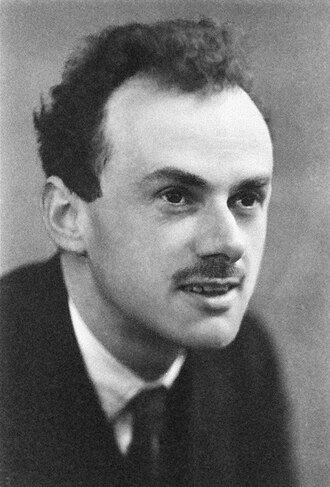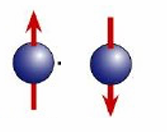Chapter 2 Quntum Effects
2.1 Superposition

A pure state in quantum mechanics is represented in terms of a normalised vector is \(|\psi\rangle\) in a complex inner product space \(\mathcal{H}\) (called Hilbert space).
The notation \(|\psi\rangle\) is used for quantum states, represented by column vectors, and it is called a ket vector; while the conjugate transpose of the \(|\psi\rangle\) is called the bra vector \((\langle\psi|)\), leading to bra-ket, known as Dirac notation.
Inner product \((\psi,\phi)\) is expressed as \(\langle\psi|\phi\rangle\). Accordingly, the normalisation condition can be stated as \(\langle\psi|\psi\rangle = 1\).
| ket vector | bra vector |
|---|---|
| \(| \psi \rangle = \begin{pmatrix} a \\ b \end{pmatrix}\) | \(\langle\psi| = \begin{pmatrix} \bar{a} & \bar{b} \end{pmatrix}\) |
| Column vector | Row vector |
Remark. \[\langle \psi_1 | \psi_2 \rangle = \overline{\langle \psi_2 | \psi_1 \rangle}\]
Accordingly, it is possible to handle inner and outer products conveniently.
\[| \psi \rangle \langle \phi | = \begin{pmatrix} a\bar{c} & a \bar{d} \\ b\bar{c} & b \bar{d} \end{pmatrix}\] where \(| \psi \rangle = \begin{pmatrix} a \\ b \end{pmatrix}\) and \(| \phi \rangle = \begin{pmatrix} c \\ d \end{pmatrix}\)
We refer to the Euclidean norm when defining the sizes of vectors. That is, \[|| \psi || = | \langle \psi | \psi \rangle |.\]
If the two states \(|\psi_1\rangle\) and \(|\psi_2\rangle\) are physical states of the system, then their linear superposition \(c_1 |\psi_1\rangle + c_2 |\psi_1\rangle\) is also a possible state of the same system, where \(c_1\) and \(c_2\) are complex numbers satisfying \(| c_1 |^2 + | c_2 |^2 = 1\).
This is called the superposition principle, and is extendable to any number of states, by considering appropriate basis states.
A single-qubit quantum state is represented as: \[ |\psi\rangle = \alpha |0\rangle + \beta |1\rangle, \] where \(\alpha, \beta \in \mathbb{C}\), and \(|\alpha|^2 + |\beta|^2 = 1\) (normalization condition).
The state can also be parameterized in terms of angles: \[ |\psi\rangle = \cos{\frac{\theta}{2}} |0\rangle + e^{i\phi} \sin{\frac{\theta}{2}} |1\rangle, \] where:
- \(\theta \in [0, \pi]\): Determines the weight of \(|0\rangle\) and \(|1\rangle\).
- \(\phi \in [0, 2\pi)\): Defines the relative phase between \(|0\rangle\) and \(|1\rangle\).
The angles \((\theta, \phi)\) represent a unique point on the unit sphere in \(\mathbb{R}^3\), called the Bloch Sphere.
The quantum state \(|\psi\rangle\) corresponds to a point \(\mathbf{r}\) on the Bloch sphere: \[ \mathbf{r} = (\langle \sigma_x \rangle, \langle \sigma_y \rangle, \langle \sigma_z \rangle), \] where the components are:
- \(\langle \sigma_x \rangle = \sin{\theta} \cos{\phi}\),
- \(\langle \sigma_y \rangle = \sin{\theta} \sin{\phi}\),
- \(\langle \sigma_z \rangle = \cos{\theta}\).
This defines a one-to-one correspondence between quantum states (up to a global phase) (\(e^{i\gamma} |\psi\rangle\)) and points on the unit sphere.
::: {.remark}
The global phase does not change the Bloch sphere
representation. That is, states differing by a global phase represent
the same physical qubit state.
:::
Consider an electron that has either spin up or down. We now state the states with respect to the basis up \(|↑\rangle\) and down \(|↓\rangle\) states.

A possible state of the electron \[| \psi \rangle = \sqrt{\frac{2}{3}} | ↑ \rangle + \frac{i}{\sqrt{3}} | ↓ \rangle\] because \(\left| \sqrt{\frac{2}{3}} \right|^2 + \left| \frac{i}{\sqrt{3}} \right|^2 = \frac{2}{3} + \frac{1}{3} = 1\)
2.2 Measurement
In quantum mechanics, there is an operator corresponding to each dynamical observable of classical physics, such as position, momentum, spin, etc. This operator is mathematically expressed by a Hermitian matrix acting on the Hilbert space \(\mathcal{H}\).
Let \(a\) be an observable and \(A\) be the corresponding Hermitian operator acting on the Hilbert space \(\mathcal{H}\). When \(a\) is measured, one of the eigenvalues of \(A\) is obtained, and the system suddenly changes to the corresponding eigenstate.
Eigenvalues of Hermitian matrices are real and eigenvectors corresponding to different eigenvalues are orthogonal. The system collapses to state \(|\lambda_1\rangle\) and we obtain the eigenvalue \(\lambda_1\): \[c_1|\lambda_1\rangle + c_2|\lambda_2\rangle \rightarrow |\lambda_1\rangle\]
Or, to state \(|\lambda_2\rangle\) and we obtain the eigenvalue \(\lambda_2\): \[c_1|\lambda_1\rangle + c_2|\lambda_2\rangle \rightarrow |\lambda_2\rangle\]

\[|↑\rangle = \begin{pmatrix} 1 \\ 0 \end{pmatrix}, |↓\rangle = \begin{pmatrix} 0 \\ 1 \end{pmatrix}.\]
Corresponding spin operator (Hermitian matrix) (Pauli z-matrix): \(\sigma_z = \begin{pmatrix} 1 & 0 \\ 0 & -1 \end{pmatrix}\)
Eigenstates \(|↑\rangle\) and \(|↓\rangle\), with eigenvalues \(\pm 1\): \[\sigma_z|↑\rangle = |↑\rangle,\sigma_z|↓\rangle = -|↓\rangle\]
A quantum measurement is described by a set of measurement operators \(\{M_a\}\), which operate on the state of the system. Consider: \(|\psi\rangle = c_1|\lambda_1\rangle + c_2|\lambda_2\rangle\).
The probability of collapsing to state \(|\lambda_i\rangle\) is given by \(|c_i|^2\).
Note that \(|c_1|^2 + |c_2|^2 = 1\).Therefore, \(c_1\) and \(c_2\) are called probability amplitudes.
Example 2.1 
Consider \[\psi\rangle = \frac{2}{3}|↑\rangle + \frac{i}{3}|↓\rangle\]
- Probability of collapsing to spin-up: \(\frac{2}{3}\)
- Probability of collapsing to spin-down: \(\frac{1}{3}\)
This is also stated as follows in another approach: Consider an experimental setup which is described by an observable \(a\) (with corresponding Hermitian operator \(A\)) to be measured and state \(|\psi\rangle\) of the system. Then the expectation value \(⟨A\rangle\) of \(a\) after measurements with respect to a state \(|\psi\rangle\) is given by: \(⟨A\rangle =\langle\psi|A|\psi\rangle\).
Example 2.2 Calculating the expectation value of \(\sigma_z\) (Pauli \(z\)-matrix) for the given state: \[ |\psi\rangle = \sqrt{\frac{2}{3}} |0\rangle + \frac{i}{\sqrt{3}} |1\rangle. \] Then, \[ |\psi\rangle = \sqrt{\frac{2}{3}} \begin{pmatrix} 1 \\ 0 \end{pmatrix} + \frac{i}{\sqrt{3}} \begin{pmatrix} 0 \\ 1 \end{pmatrix} = \begin{pmatrix} \sqrt{\frac{2}{3}} \\ \frac{i}{\sqrt{3}} \end{pmatrix}. \] \[\sigma_z|\psi\rangle= \begin{pmatrix} 1 & 0 \\ 0 & -1 \end{pmatrix} \begin{pmatrix} \sqrt{\frac{2}{3}} \\ \frac{i}{\sqrt{3}} \end{pmatrix} = \begin{pmatrix} \sqrt{\frac{2}{3}} \\ -\frac{i}{\sqrt{3}} \end{pmatrix}. \]
\[ \langle \psi | = \begin{pmatrix} \sqrt{\frac{2}{3}} & -\frac{i}{\sqrt{3}} \end{pmatrix}. \] So, \[ \langle \psi |\sigma_z|\psi\rangle = \begin{pmatrix} \sqrt{\frac{2}{3}} & -\frac{i}{\sqrt{3}} \end{pmatrix} \begin{pmatrix} \sqrt{\frac{2}{3}} \\ -\frac{i}{\sqrt{3}} \end{pmatrix}=\frac{2}{3} + \frac{1}{3} = 1. \] Henece, \[\text{The expectation value of } \sigma_z = \langle \sigma_z \rangle = 1. \]
Measurement can be regarded as an operation that is possible to perform with respect to any orthonormal basis. The following basis is called the Hadamard basis: \[|+\rangle = \frac{1}{\sqrt{2}}|0\rangle + \frac{1}{\sqrt{2}}|1\rangle\] \[|−\rangle = \frac{1}{\sqrt{2}}|1 − \rangle \frac{1}{\sqrt{2}}|1\rangle\]
Exercise 2.1 
\[|\psi\rangle = \frac{2}{3}|0\rangle + \frac{i}{3}|1\rangle\]
What happens if this is measured with respect to the Hadamard basis?

Solution:
We can obtain easily
\[
\begin{eqnarray}
|0\rangle&=\frac{1}{\sqrt{2}}\left(|+\rangle+|+\rangle\right)\\
|1\rangle&=\frac{1}{\sqrt{2}}\left(|+\rangle+|-\rangle\right)\\
\end{eqnarray}
\]
Then,
\[
\begin{eqnarray}
|\psi\rangle
&=&\frac{2}{3}|0\rangle + \frac{i}{3}|1\rangle\\
&=&\frac{2}{3}\left(\frac{1}{\sqrt{2}}\left(|+\rangle+|-\rangle\right)\right)+
\frac{i}{3}\left(\frac{1}{\sqrt{2}}\left(|+\rangle-|-\rangle\right)\right)\\
&=&\frac{1}{\sqrt{2}}\left(\frac{2+i}{3}|+\rangle+\frac{2-i}{3}|-\rangle\right)\\
&=&\frac{2+i}{3\sqrt{2}}|+\rangle+\frac{2-i}{3\sqrt{2}}|-\rangle
\end{eqnarray}
\]
2.3 Unitary Evolution

The time evolution of a closed quantum system is governed by the Schrödinger equation: \[i\hbar \frac{d}{dt}|\psi(t)\rangle = H|\psi(t)\rangle\] where:
- \(\hbar\) is the reduced Planck’s constant.
- \(H\) is the Hamiltonian of the system (a Hermitian operator).
Remark. The following is a solution to the Schrödinger equation: \[|\psi(t_2)\rangle = e^{\frac{i H}{\hbar} (t_1 - t_2)} |\psi(t_1)\rangle.\]
Note that \(e^{\frac{i H}{\hbar} (t_1 - t_2)}\) is a unitary.
Verification:
Let say,
\[ U(t_1, t_2) = e^{-\frac{i}{\hbar} H(t_1 - t_2)} \tag{2.1} \]
Then,
\[ \begin{eqnarray} U^\dagger(t_1, t_2) &=& \left( e^{-\frac{i}{\hbar} H(t_1 - t_2)} \right)^\dagger\\ &=& e^{\frac{i}{\hbar} H^\dagger (t_1 - t_2)}\\ &=& e^{\frac{i}{\hbar} H(t_1 - t_2)} \tag{2.2} \end{eqnarray} \]
(Since \(H^\dagger = H\), assuming \(H\) is Hermitian)
From equations (2.1) and (2.2), we have:
\[ U U^\dagger = e^{-\frac{i}{\hbar} H(t_1 - t_2)} \cdot e^{\frac{i}{\hbar} H(t_1 - t_2)}\\ = e^0 = I \]
Similarly, it follows that:
\[ U U^\dagger = U^\dagger U = I \]
Here, note that for any operator \(A\):
\[ e^A = I + A + \frac{A^2}{2!} + \frac{A^3}{3!} + \cdots \]
So,
\[ e^0 = I + 0 + \frac{0^2}{2!} + \cdots = I \]
This leads to the notion of unitary evolution of a quantum system. The gate model of quantum computing is based on this idea. A quantum gate is a unitary matrix, acting on a quantum state, called a qubit.

2.4 Entanglement
Consider a quantum system consisting of two components; one in a Hilbert space \(\mathcal{H}_1\) and the other in another Hilbert space \(\mathcal{H}_2\). Then the system as a whole is in Hilbert space \(\mathcal{H} = \mathcal{H}_1 \otimes \mathcal{H}_2\).
\[ |\psi\rangle =\sum_{i,j}c_{i,j}|e_{1,j}\rangle \otimes |e_{2,j}\rangle \]
,where
- \(|\psi\rangle\): Composite state
- \(|e_{1,j}\rangle\): Orthonormal basis for \(\mathcal{H}_1\)
- \(|e_{2,j}\rangle\): Orthonormal basis for \(\mathcal{H}_2\)
| No of bits | Picture | Orthonormal Basis | ||
|---|---|---|---|---|
| Single qubit | \(\mathcal{H_1}\) |  |
\(|\uparrow\rangle=|0\rangle=\begin{pmatrix}1\\0\end{pmatrix}\) \(|\downarrow\rangle=|1\rangle=\begin{pmatrix}0\\1\end{pmatrix}\) |
\(|0\rangle,|1\rangle\) |
| Two qubits | \(\mathcal{H}_1\) \(\mathcal{H}_2\) |
  |
\(\longleftarrow|0\rangle,|1\rangle\) \(\longleftarrow|0\rangle,|1\rangle\) |
\[\begin{eqnarray} \mathcal{H}= \mathcal{H}_1& \otimes & \mathcal{H}_2\\ |0\rangle & \otimes & |0\rangle\\ |0\rangle & \otimes & |1\rangle\\ |1\rangle & \otimes & |0\rangle\\ |1\rangle & \otimes & |1\rangle \end{eqnarray} \] |
Consider a quantum system composed of two components; one in a Hilbert space \(\mathcal{H}_1\) and the other in another Hilbert space \(\mathcal{H}_2\).
Then, the system as a whole is in the Hilbert space \(\mathcal{H} = \mathcal{H}_1 \otimes \mathcal{H}_2\).
\[\begin{eqnarray} |00 \rangle &:=& |0 \rangle \otimes |0 \rangle =\begin{pmatrix} 1 \\0 \end{pmatrix}\otimes \begin{pmatrix} 1 \\0 \end{pmatrix}=\begin{pmatrix} 1\\0\\0\\0 \end{pmatrix}\\\\ |01 \rangle &:=& |0 \rangle \otimes |1 \rangle =\begin{pmatrix} 1 \\0 \end{pmatrix}\otimes \begin{pmatrix} 0 \\1 \end{pmatrix} =\begin{pmatrix} 0\\1\\0\\0 \end{pmatrix}\\\\ |10 \rangle &:=& |1 \rangle \otimes |0 \rangle =\begin{pmatrix} 0 \\1 \end{pmatrix}\otimes \begin{pmatrix} 0 \\1 \end{pmatrix}=\begin{pmatrix} 0\\0\\1\\0 \end{pmatrix}\\\\ |11 \rangle &:=& |1 \rangle \otimes |1 \rangle =\begin{pmatrix} 0 \\1 \end{pmatrix}\otimes \begin{pmatrix} 0 \\1 \end{pmatrix}=\begin{pmatrix} 0\\0\\0\\1 \end{pmatrix}\\\\ \end{eqnarray}\]
Example 2.3 Example of Two-qubit state \[ |\psi\rangle = \frac{1}{2}|00\rangle + \frac{1}{2}|01\rangle + \frac{1}{2}|10\rangle + \frac{1}{2}|11\rangle \]
A composite state that can be written as a tensor product of two vectors as \(|\psi\rangle = |\psi_1 \rangle \otimes |\psi_2\) is called a separable state \[\begin{eqnarray} \psi\rangle &=& \frac{1}{2}|00\rangle + \frac{1}{2}|01\rangle + \frac{1}{2}|10\rangle + \frac{1}{2}|11\rangle \\ &=& \underbrace{\frac{1}{\sqrt{2}}|0\rangle + \frac{1}{\sqrt{2}}|1\rangle}_{|\psi_1\rangle} \otimes \underbrace{\frac{1}{\sqrt{2}}|0\rangle + \frac{1}{\sqrt{2}}|1\rangle}_{|\psi_2\rangle} \\ &=& |\psi_1\rangle \otimes |\psi_2\rangle \end{eqnarray}\]
| \(|\psi_1\rangle\) |  |
| \(|\psi_2\rangle\) |  |
There are quantum states in the Hilbert space \(\mathcal{H}_1\otimes \mathcal{H}_2\) that cannot be stated as a product!
Exercise 2.2 Show that the following is such a state: \[ |\psi\rangle = \frac{1}{\sqrt{2}}|00\rangle + \frac{1}{\sqrt{2}}|11\rangle \]
A product state for a quantum system in \(H_1 \otimes H_2\) can be written as: \[ |\psi\rangle = |\psi_1\rangle \otimes |\psi_2\rangle \] where \[ |\psi_1\rangle = a|0\rangle + b|1\rangle, \quad |\psi_2\rangle = c|0\rangle + d|1\rangle \] with \(a, b, c, d\) being complex coefficients satisfying the normalization conditions: \[ |a|^2 + |b|^2 = 1 \quad \text{and} \quad |c|^2 + |d|^2 = 1. \]
Expanding the tensor product \(|\psi_1\rangle \otimes |\psi_2\rangle\): \[ |\psi_1\rangle \otimes |\psi_2\rangle = (a|0\rangle + b|1\rangle) \otimes (c|0\rangle + d|1\rangle) \] \[ = ac|00\rangle + ad|01\rangle + bc|10\rangle + bd|11\rangle \]
This means that any product state must have coefficients \(ac, ad, bc, bd\) for the respective basis states \(|00\rangle, |01\rangle, |10\rangle, |11\rangle\), which are all factorizable in terms of \(a, b, c, d\).
For the given state: \[ |\psi\rangle = \frac{1}{\sqrt{2}}|00\rangle + \frac{1}{\sqrt{2}}|11\rangle \]
The coefficients are: \[ \text{Coefficient of } |00\rangle = \frac{1}{\sqrt{2}}, \quad \text{Coefficient of } |11\rangle = \frac{1}{\sqrt{2}} \] \[ \text{Coefficient of } |01\rangle = 0, \quad \text{Coefficient of } |10\rangle = 0 \]
For the state to be a product state, there must exist \(a, b, c, d\) such that: \[ ac = \frac{1}{\sqrt{2}}, \quad ad = 0, \quad bc = 0, \quad bd = \frac{1}{\sqrt{2}} \]
From \(ad = 0\), either \(a = 0\) or \(d = 0\). Similarly, from \(bc = 0\), either \(b = 0\) or \(c = 0\). However: 1. If \(a = 0\), then \(ac \neq \frac{1}{\sqrt{2}}\), which is a contradiction. 2. If \(b = 0\), then \(bd \neq \frac{1}{\sqrt{2}}\), which is also a contradiction.
Thus, no combination of \(a, b, c, d\) can satisfy all the conditions simultaneously.
Since the given state cannot be written as \(|\psi_1\rangle \otimes |\psi_2\rangle\), it is not a product state. Therefore, the state \[ |\psi\rangle = \frac{1}{\sqrt{2}}|00\rangle + \frac{1}{\sqrt{2}}|11\rangle \] is an entangled state.
2.5 Exercise
Exercise 2.3 Which of the following states:
- \(\frac{1}{\sqrt{2}} (|0\rangle + |1\rangle)\)
- \(|00101\rangle\)
- \(|++\rangle =\frac{1}{\sqrt{2}} (|00\rangle + |01\rangle + |10\rangle + |11\rangle)\)
- \(\frac{1}{\sqrt{2}} (|01\rangle + |10\rangle)\)
- \(|w_4\rangle = \frac{1}{\sqrt{2}} (|0001\rangle + |0010\rangle + |0100\rangle + |1000\rangle)\)
- Are these states superpositions in the standard basis?
- Are these states superpositions in the Hadamard basis \(\{ |+\rangle, |-\rangle \}\), where: \(|+\rangle = \frac{1}{\sqrt{2}} (|0\rangle + |1\rangle)\) and \(|-\rangle = \frac{1}{\sqrt{2}} (|0\rangle - |1\rangle)\)?
- Are these states entangled?